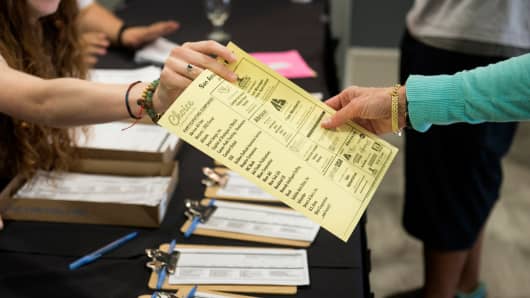The Labor Department said Friday that the unemployment rate stayed at 5.1 percent in September — but does that tell the real story?
Most economists look beyond the "main" unemployment rate to other figures that can give a more textured view of the employment situation. On jobs day, the Bureau of Labor Statistics puts out a slew of figures, each of which provide their own view of the economy.
One of those figures is the U-6 rate. Many economists look to the U-6 rather than the main unemployment rate (also know as the U-3). The BLS defines U-6 as "total unemployed, plus all persons marginally attached to the labor force, plus total employed part time for economic reasons, as a percent of the civilian labor force," plus all marginally attached workers.





